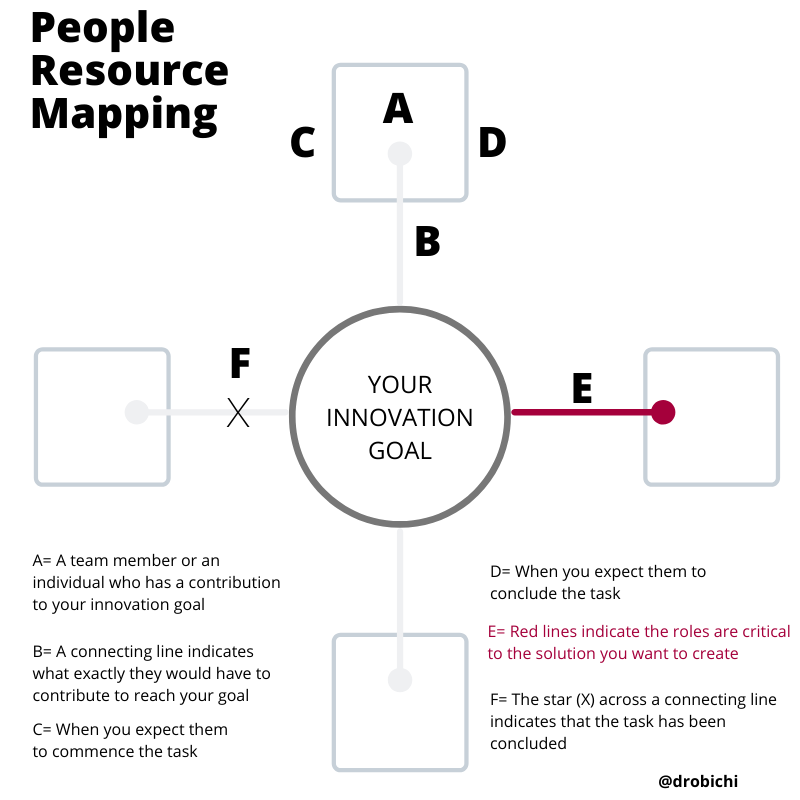
Every day I wake up to the task of guiding young people to create a solution and tackle a challenge. The most difficult part of this work is inspiring them to do what they need to do when they ought to do it; as against what they want to do when they feel like doing it. It turns out that this is more difficult than raising funds for our programmes. Admittedly, these talented folks have just 10 hours a week to work with me. Question then becomes: How do you squeeze out the best of 10 hours from an ambitious multi-talented young adult who is battling with so many other distractions?
The above picture, interestingly, mirrors the situation in established organizations who want to make innovations happen. Most set out to create a dedicated team of experts which include those working in the highly organized Performance Engine units of the organization. Just as in my small hub, the Performance Engine can only offer a fraction of their time to the project. How then do you optimize these scarce hours and their capabilities, while creating a balance among often conflicting schedules of team members?
Over the months, I’ve realized that what makes a big innovation is not the technology behind it but the size of the problem it’s designed to solve. That’s why there’s such a thing as business model innovation. And as I’ve also observed, you may not require complicated tools to organize your team and resources for optimum performance especially when you’re operating in a resource –scarce environment. For this, it makes absolute sense to identify tools that can serve the good purpose of aligning resources (especially time and human) while communicating in a simple way for all involved to appreciate on paper without worrying about software applications – again, resonating with resource-poor settings.
A number of project management tools exist. Some are way too complicated to be managed without having a project management role. But over and over, we have come to appreciate the use of this simple tool which we dub People Resource Mapping which we developed Young Innovation Leaders.
The People Resource Mapping simply organizes the required talents necessary to create the innovation. The elements involved in this include:
A. Identifying a team member who has a contribution to your innovation goal: With this, it’s clear to me how many people in the team whom I require to realize the goal and what exact talents are missing.
B. Defining what exactly they would have to contribute to reach your goal: This makes it clear enough what their contributions would be to the goal. It removes any ambiguity for everyone typical of our scenario.
C. Stating when you expect them to commence the task: You will agree with me that this is as important as the task itself. If you don’t agree on when to start for each person, it’s difficult to set when to conclude; and it gets to affect everyone else on the team.
D. Stating when you expect them to conclude the task: This is probably more important than defining the commencement. You remember that a task usually fills the amount of time allotted to it. Most people working amidst other duties would set their eyes on the completion date and spread their tasks to extend to it. So, it’s important to agree and set a commitment for this.
E. Delineating the critical and “rate-limiting” roles for the innovation goal to be accomplished: This helps to communicate the relative importance of roles.
F. Crossing out a line simply means the task has been completed: At a glance, I get to know which tasks have been completed. If the individual is still relevant for another task, I can add a fresh line connecting the individual’s box to the central innovation goal, with new timelines.
Creating this map for each team makes it clearer and easier to organize and plan my innovation goals reconciling it with the varied “distractions” of my young talents. It’s best to sort it out at the planning stage of the innovation project. However, it’s worthy of note that the map is iterative. You keep editing it knowing that innovation is non-routine and uncertain in its processes and results.
I know you’d like to know when this tool will not work. Truly, I don’t claim that it will work at all times, however it’s best suited for small teams with a clear challenge. It’s not best to use the PRM tool when working with big teams and when the challenge is complex, consisting of many different projects. Of course, in such situations you do need a project manager to work the more complex tools.

